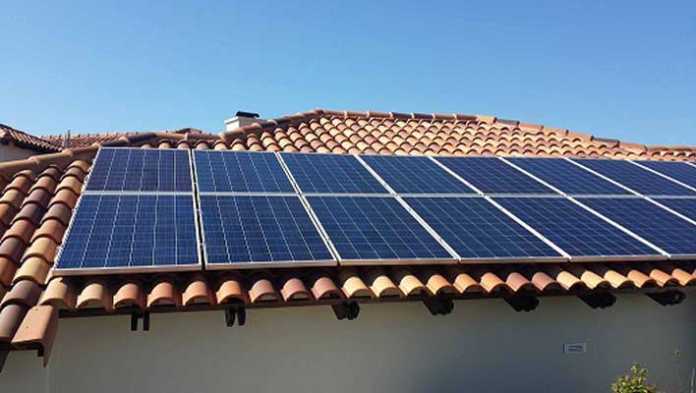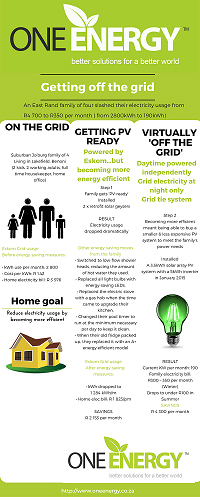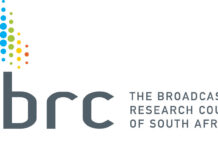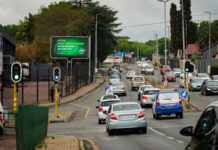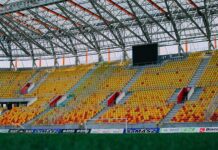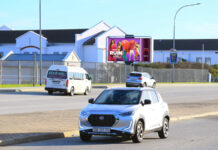Greater grid independence is easier and more affordable than you realise
We are still thinking ‘back in the day’ thoughts when it comes to electricity – for years there was no choice, if you had access to electricity it was supplied by Eskom, and that was it. “Considering the near future, and the announcement that beleaguered Eskom wants South African homes and businesses to pay at least 20% more for electricity from 1 April 2018, we are forced to think even harder about our options, and whether we could be spending our money more wisely,”-Mark Willoughby, MD of the One Energy Group.
However, conjuring up ideas of having to rewire the house, install wind turbines on your lawn, and hoping the sun will shine to charge up your solar panels for a hot shower is enough to short circuit anyone’s brain into stalling the idea of change.
“We need to rewire our brains to think differently about renewable energy and whether we’re still prepared to foot the rapidly escalating bill for service delivery inefficiency and corruption. It’s 2017 and there are some very solid energy alternatives that are making people sit up and think,” says Willoughby.
Rapidly increasing costs of electricity have rocketed at over 500% since 2007, driven by inefficiencies, lack of governance and reports of endemic corruption within Eskom. The latest revelations are that Eskom’s solvency is one again in crisis and that the power utility is down to R20bn and will not be able to pay salaries in three months’ time. The bottom line is that electricity users are going to take the brunt and foot the bill for yet another massive bailout.
“When it comes to your electricity supply and costs, you have the absolute power to take control and do something constructive about it by becoming more energy efficient and grid independent. It’s easier and far more affordable than most people realise, and any investment into making your property more energy efficient will save you money and increase the value of your property at the same time,” explains Willoughby.
One typical suburban family of four living in Benoni, Gauteng engaged with One Energy to get as close as off the grid as possible by converting to solar water heating followed by photovoltaic electricity generation, or PV. The family has already slashed their electricity spend by R235k since they implemented solar, and cumulatively they’ll save another R400 000 over the next five years based on average annual price escalations. According to an independent property valuation, it has also added almost 15% to the market value of their home. With two children at school, two businesses to run and staff salaries to pay, it’s the kind of big money any family and entrepreneur would want to keep in their bank account.
How did they do it?
- From the outset their objective was to reduce electricity usage at home and implement energy-efficiency measures in order to get ‘PV-ready’.
- The two solar geysers they installed saved them 1500kWh of electricity every month (50kwh per day) – a monthly saving of over R2 000.
- They also employed energy saving measures at home from changing to a gas hob, re-setting the pool timer, installing efficient shower heads to reduce hot water consumption and switching to LED lighting.
- These efficiency measures allowed them to buy a smaller and therefore, less expensive PV system by becoming more energy efficient first. The family now generates all their day-time electricity requirements themselves, for free, from the sun by means of solar geysers and a solar photovoltaic (PV) system for electricity generation.
- This family financed the move to PV and pays for it entirely out of their savings on grid electricity – had they not gone this route, their current electricity bill would have been in the region of R4 700 per month.
- Right now, their highest municipal bill is R340 in winter and drops down to under R100 in summer. Even after paying their monthly loan to finance their PV system, they are still putting at least R1500 back in their pocket every month compared to what they would have been paying to council. Once the loan is paid off, they can still look forward to massive savings – and grid independence – for at least the next 20 years.
Another important consideration in the escalating costs of electricity is the fact that the recent ruling by the Supreme Court of Appeal on 6 June 2017 has flung the door open for the approval of further electricity tariff increases over and above the proposed 20% tariff hike, as Nersa will now be able to process regulatory clearing account (RCA) applications by Eskom to recover about R42 bn through further tariff increases. Energy expert Chris Yelland has warned that the judgement has dire implications for the cost of electricity. Add yet another looming state bailout of the beleaguered utility and you soon realise that South Africans and businesses find themselves in an untenable financial predicament.
“Our considered view is that the Eskom will propose for massive increases of up to 50%, aiming as high as possible so that any compromise tariff could be in the region of 15-30%, and will be so every year for the foreseeable future,” explains Mark Willoughby, One Energy.
The cost of doing nothing is unthinkable
Starting at an average electricity rate of R1.75 per kWh (based on Ekurhuleni rates for our case study family), and factoring in a conservative escalation of 15% per annum if Eskom gets its way, our case study family would be paying the following over the next five years – and doubling their current spend in five years alone:
- Their current electricity spend will double in 5 years – and that’s based on a conservative 15% annual increase
Total electricity spend in 5 years with no intervention: R494 000.00

The importance of quality products and installations
With so many renewable products on the market with varying levels of quality, performance, technical expertise and installation experience, its often very difficult for a consumer to know what the right system is for their needs, and whether they are dealing with a reputable installer who will not only give them a thorough assessment of the right system for their needs, but also provide the after-sales service, support and product warranties that they need.
Since the trend towards renewable energy became a major drive in South Africa, there have been a number of cheap products that have flooded the market with equally questionable installation expertise and back-up. When it comes down to choosing a solution, this is one time you need to be very sure you are comparing apples with apples.
“We always advise our clients to make sure that they question and verify that the system they you choose is firstly fit-for-purpose, has been quality checked and vetted against our local standards and that the installer is suitably qualified and authorised. Choose a supplier that is able to offer you the full range of offerings on the market that is fit for your needs and lifestyle. Make sure you get valid and credible advice and that you are paying for something that will work for you,” explains Willoughby.
To help you in your decision making, One Energy sheds some light on what the important considerations are when choosing a renewable partner:
- Quality, efficiency, durability and extended warranties are very important considerations. Buying down on quality is likely to be an expensive purchase at the end of the day – the efficiency of the system will be compromised and before long the system will not provide the heat or energy output required to make a significant enough impact on reducing your utility bill – the whole point of why you bought it in the first place. There are many cheap imports flooding the market, and everything about their performance and components is cheap too.
- Another important aspect is the installation of the system. You can have a great system but if your installer does not know the finer aspects of the job and use the best quality installation materials, your overall system performance will be compromised and in turn reduce the savings and benefits of the system. Cutting corners can also have dire implications for the safety of the systems and even present a fire hazard.
- After sales back-up and support is essential. If you cannot get an installer out to even visit you for a sales call, what are your chances of getting them there for a back-up call? Dealing with a reputable supplier with a good service ethic that you know is going to be around for years to come and honour warranties is important.
- No shooting in the dark – some providers will ask you only for an electricity bill and attempt to provide a PV solution based on this, but the approach is fundamentally flawed and inaccurate since your bill cannot reveal day and night usage, selective loads or peak demands which need to be factored into your PV solution. A thorough load analysis is a must. That’s why with One Energy, we’ll visit your premises, set-up loggers on your electricity distribution board for at least a week to ten days, and provide you with a comprehensive view of where your electricity usage is going, and what steps we can take to help you reduce it. We will also be able to provide a very good indication of what your savings will be depending on what size system and the solutions we specify for you, so there is no shooting in the dark.
Visit our Blog for more information, e-mail gogreen@oneenergy.co.za or go to www.oneenergy.co.za or call 0861 4328 464 (0861 HEATING).



